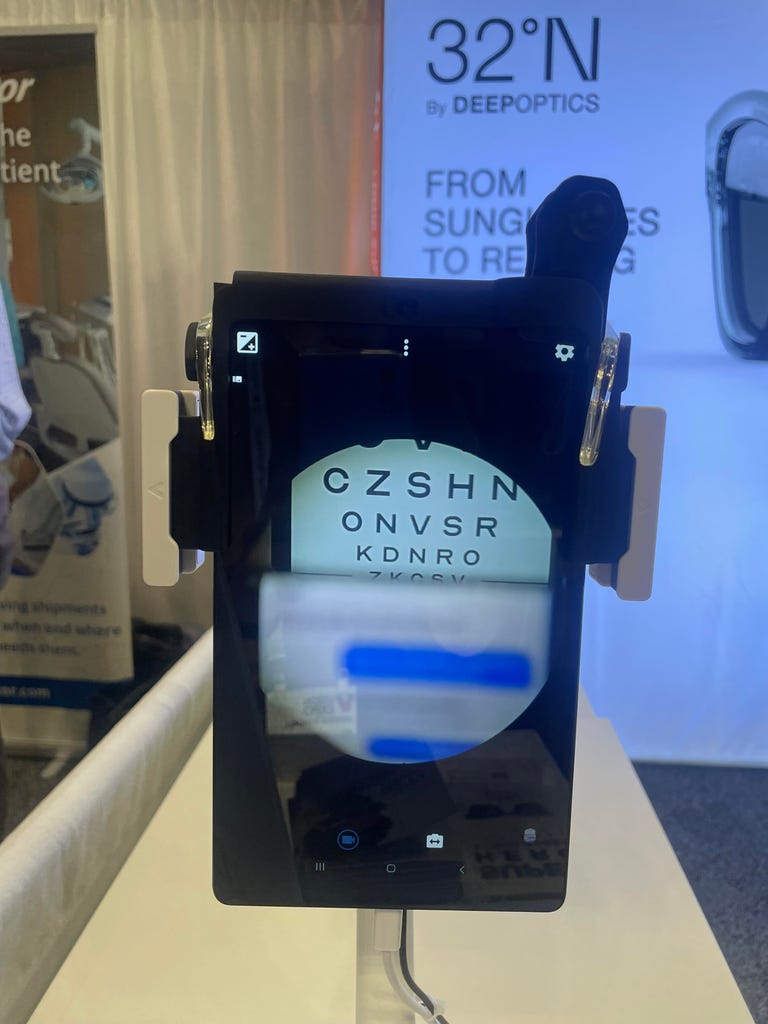The vision and eye care business is a unique blend of two industries: health care and fashion. In New York City this month, this was on display fully at the Vison Expo East, an event for eye care providers, designers, vision business leaders and eye-tech aficionados. (There’s also a Vision Expo West.) Think of it as the CES of eye care, but this time it was off the Hudson River and with raised champagne glasses to the most stylish eye frame designs.
I got an opportunity to go to the Vision Expo because I was in line to view one particular pair of specs: adaptive sunglasses that turn into reading glasses when you want them to, and back into regular sunglasses when you don’t want them to. They’re called 32 Degrees North, and we wanted to see if the glasses could live up to their claims.
I couldn’t give 32 Degree North glasses, made by Israeli company DeepOptics, a true test since I don’t have presbyopia – an inevitable vision problem people develop around age 45, when natural changes to the lens of the eye make looking at things up close blurry. So I tried them on, toggled with the different viewing modes and spoke with the people behind the tech.
Examples of when this may come in handy out in the real world is when you’re reading outside, you’re walking around a new city trying to read directions on your phone or if you’re spending any of your several hours of smartphone time outside, where you’d normally use your reading glasses but you have to wear sunglasses instead.
What the glasses look like and what they’re made of

An example of the sunglasses in distance-viewing or regular mode. If you’re nearsighted and need a prescription to see things far away, you’ll need to wear your contacts with 32 Degrees North sunglasses since they can only correct for presbyopia.
The sunglass lenses in the glasses are made of Deep Optics’ pixelated liquid crystal, which folks behind the company described as a similar idea to the LCD in your LCD television, except it functions as a lens. The crystal layer creates an “unlimited number of dynamic, high-quality lenses,” the company says, which can be changed into your reading glasses prescription any moment when you swipe or touch your glasses, up to + 2.5 diopters (you can always adjust your prescription in the paired app). Powers up to 2.5 diopters should cover most people’s presbyopia prescription, though you should always confirm with your eye doctor.
Adjusting your vision with an app and a tap
Whether you should swap out your regular sunglasses and reading glasses combo for this $849 pair of high-tech specs is completely up to your taste, how much time you spend outdoors, and probably, how bothered you are by needing to fish for reading glasses for quick tasks. (Also, there’s a difference between losing a $10 pair of reading glasses and leaving behind a $800 a pair, so maybe keep past experiences in mind.) We can’t speak yet for how these glasses work compared to traditional reading glasses.